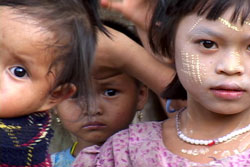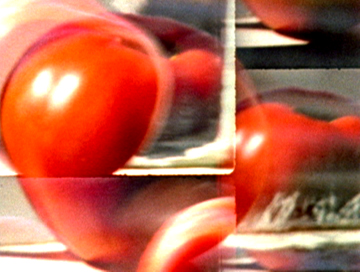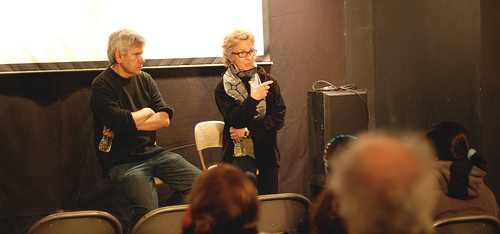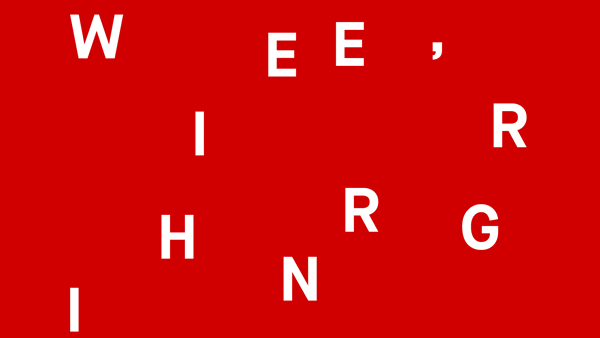On March 23rd independent filmmaker Holly Fisher visited UnionDocs to show Deafening Silence, her poetic documentary about life under Burma’s brutal military dictatorship. Following the screening, she spoke with filmmaker John Gianvito (Profit Motive and the Whispering Wind (2006) and Far from Vietnam (2012)) about the complexity of the present situation in Burma.
Burma is under military control since 1962 and the United Nations has reported systematic human rights violations in the country, including genocide, slavery and lack of freedom of speech. Fisher’s vision of this persecuted country is shown by her specific use of subjective and multi layered images from Youtube and archival imagery, in addition to her own footage. This patchwork raises the issue of the viewer’s position and seems to be an imminent personal movie, where Fisher expresses herself in showing many little stories in one movie.
 http://tekniksipilsuwitno.mhs.narotama.ac.id/2018/02/02/order-panmycin-aqua/
http://tekniksipilsuwitno.mhs.narotama.ac.id/2018/02/02/order-panmycin-aqua/ 
Holly Fisher (HF) : Burmese leaders had launched a big campaign for tourism and I understood that if I was to go to there, any image that I brought back was essentially for the junta if I didn’t work behind my own image. They had sanitized all the tourist spots and were controlling where you could and couldn’t go.
“I’M INTERESTED IN COMPLEXITY.”
John Gianvito (JG) : Part of what you have done here is to respect that complexity of the Burmese situation, and it is reflected in the form of the film. It doesn’t seem to provide all the answers. It gives a prismatic way of journeying through some measure of what one sees as an outsider travelling. I heard you got a false ID and pretended to be a tour guide making little movies to develop tourism.
Order HG : When I got out of college I made a film with a partner that attempted to take over the army corps of engineers who were destroying a wild river in Florida. After making that film I got interested in issues such as: can you change minds with films and how? I got interested in the relationship of image to audience and how to put images together in a way that would make you implicit to the situation, not a consumer of it. I worked with a lot of layerings, very abstract or silent multiple projections.
My first Burma work was made at a period where I was going in and out of my own work, working as an editor for others.
One thing I’ve learned is you can either manipulate the audience to think what you want them to think or you can work to invite them to think. I spent years embarrassed by my own work. I knew what I wasn’t doing, but I didn’t know what I was trying to do. I’m only now beginning to see.
I’m interested in complexity. There is a pleasure in ambiguity, in not knowing. I’ve been finding an organic way of structuring, without a beginning, a middle, or an end. So you could see it as a film about Burma or you can see it as a sort of tapestry… even if I don’t like that word.
“THIS IS ABOUT BURMA, BUT NOT ONLY”
JG : I think this film is what I could call a utilitarian film, a film that re-sensitizes us to things we may already know, but where we need constant reminders. This movie is about Burma but not only. When I think about the question of the representation, it makes me think about Harun Farocki’s Inextinguishable Fire (1969), a 20-minute film about the manufacture of napalm made in the late 60s. There was a moving sequence where he talks directly at the camera about the fact that if he actually showed these images, what would happen is that it would hurt our feelings, and you would close your eyes, and eventually you would close your heart. This is not what he want to have happened—“when we show you pictures of napalm victims, you’ll shut your eyes. Then you’ll close them to the memory. And then you’ll close your eyes to the facts.” Then he takes a cigarette and burns his arm.
The testimony you hear in Deafening Silence and the shifting into the most lush, seemingly tranquil [scenery], invites tourists to the landscape underneath what you know. I find it a very potent approach on how to bring this knowledge.
HF: The image of the dead woman I used—that I didn’t use in my first film—makes me want to raise the question of using images like this. I did it by naming the cameraman who shot it: “to Rambo’s sister.”
I was pretty sure you would start to wonder what happened to her, when you saw that title, so you would weave that into the rest of the film. You are waiting for what’s going to happen. I wanted to conflate her with Aung San Suu Kyi. I wanted to set up a kind of complex hovering where these two women aren’t really in the film, but are in your mind. What you think you know about them, what you imagine, what could happen.
Buy Purchase JG : When you talk about war, you have to talk about men. I’m referring to Susan Sontag’s book. It is always men who make the war, always men who like to go to war. I recently showed my class a documentary, The Invisible War (2012), about sexual violence in the military, and it lead to a discussion about how legal systems are. It doesn’t direct its anger towards men, but all of these rapes are always by men.
That was going through my head as I was journeying through the film again and thinking about the opening to this innocent young girl. If she sees this film later, what is it going to mean to her?
HF: Cheap It is her story. She is part of the story.
“PUTTING THE VIEWER AT THE CENTER”
HF : In many advocacy films, we say the viewer is a consumer, that there is a narrative.
In what I’m doing, there is no story you can give yourself over to. I don’t allow you to identify with some character who is going to lead you through the film. You are more on your own and you have to piece together what it means and doesn’t mean.
JG : When we talk about a form such as this, that doesn’t have the archetypical beginning, middle, and end, you have to find your way. There is something that I say in relationship to my own movies, and I’m curious if you feel similarly. I often quote the filmmakers Jean-Marie Straub and Daniele Huillet: “we make our films so that people can walk out of them.”
For him there is a fascism about traditional, orthodox narrative forms that are all about keeping you in your seats, all about your eyes. He speaks about the desire to create a more democratic open form—take a look, but I’m not going to force you to stay.
HF : I made up the entire project to force me to use video. I learned on film, celluloid, so I designed this project to learn how to use new types of media and the internet. I’m always interested in multiple points of view, and where films are coming from. I’m also intrigued about how the existence of the internet changes how we live on the planet.
JG : What makes it personal is that you are always sensitive to your camera work and how you are exploring the situation, whether it’s at home or elsewhere. You could have set it up on a tripod, you could have downloaded the youtube clips neatly. People who see it quickly must think it’s amateurish, but in fact it is one of the values of how you’ve approached something.
HF : The thing that interests me in all the types of archival videos is how they are shot, how they are framed, and the person who narrates. They make themselves the center of their stories. I like to contrast that with my own funky way of doing things. The film is really made up of many little films.






